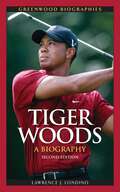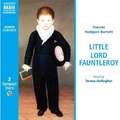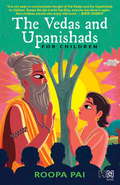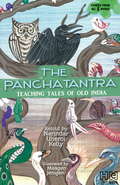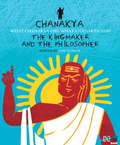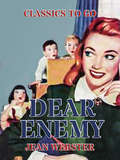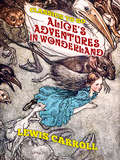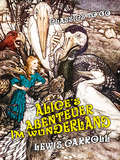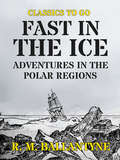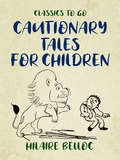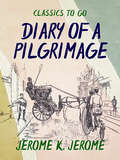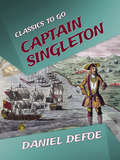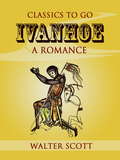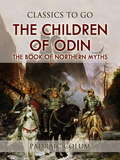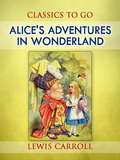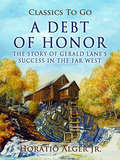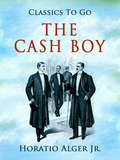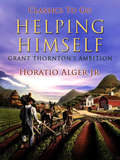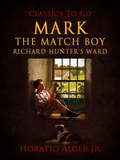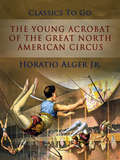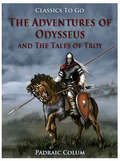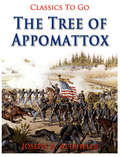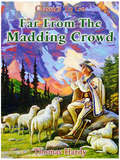- Table View
- List View
Tiger Woods: A Biography (Greenwood Biographies)
by Lawrence J. LondinoThis comprehensive biography of Tiger Woods looks at where he came from, his sports accomplishments and philanthropic efforts, and the effect he has had on sports history, marketing, and broadcasting.Tiger Woods: A Biography, Second Edition updates the 2005 edition to examine the life and career of this phenomenal athlete through the 2009 PGA Championship. The book provides information about Woods's parents and his upbringing, early life, and outstanding accomplishments as a professional golfer. It also covers Tiger's philanthropic activities including the Tiger Woods Foundation, a global organization that provides innovative educational opportunities to youth, the Tiger Woods Learning Center, and the Earl Woods Scholarship Program established to honor the spirit and vision of Tiger's father.Recognizing that the opportunities Woods has had were hard won by early African American golfers—who were denied the right to play on the PGA Tour until 1961—the book also includes a chapter on these pioneers. The volume is rounded out with a brief history of broadcasting and sports, as well as a look at the relationship between athletes and sponsors.
Renewable Energy Optimization, Planning and Control: Proceedings of ICRTE 2022 (Studies in Infrastructure and Control)
by Anita Khosla Mohan KolheThis book gathers selected high-quality research papers presented at International Conference on Renewable Technologies in Engineering (ICRTE 2022) organized by Manav Rachna International Institute of Research & Studies, Faridabad, Haryana, India, during October 7–8, 2022. The book includes conference papers on the theme ‘Computational Techniques for Renewable Energy Optimization,’ which aims to bring together leading academic scientists, researchers, and research scholars to exchange and share their experiences and research results on all aspects of renewable energy integration, planning, control, and optimization. It also provides a premier interdisciplinary platform for researchers, practitioners, and educators to present and discuss the most recent innovations, trends, and concerns as well as practical challenges encountered and solutions adopted in the fields of renewable energy and resources.
Little Lord Fauntleroy
by Frances Hodgson BurnettFrances Hodgson Burnett's conviction that love conquers all is memorably embodied in this classic rags-to-riches tale of an American boy who is transported from the mean streets of nineteenth-century New York to the splendor of his titled grandfather's English manor. Polly Hovarth writes that Little Lord Fauntleroy "was the Harry Potter of his time and Frances Hodgson Burnett was as celebrated for creating him as J. K. Rowling is for Potter." During the 1880s, fashions in the book became popular with velvet Lord Fauntleroy suits being sold, as well as other Fauntleroy merchandise such as velvet collars, playing cards, and chocolates. The Reginald Birch illustrations for the 1886 edition sparked a very romantic style of dress for boys which would endure into the early twentieth century.
The Vedas and Upanishads for Children
by Roopa PaiThree thousand years ago, deep inside the forests of India, a great ‘thought revolution’ was brewing. In those forest labs, the brightest thinker–philosophers contemplated the universe, reflected on ancient texts called the Vedas and came up with startling insights into questions we still don’t have final answers to, like: • What is the universe made of? • How do I know I’m looking at a tree when I see one? • Who am I? My body, my mind, my intelligence, my emotions, or none of the above? And where did they put those explosive findings? In a sprawling body of goosebumpy and fascinating oral literature called the Upanishads! Intimidated? Don’t be! For this joyful, fun guide to some of India’s longest-lasting secular wisdoms, reinterpreted for first-time explorers by Roopa Pai, is guaranteed to keep you turning the pages. Why haven’t you read it yet?
THE PANCHATANTRA: TEACHING TALES OF OLD INDIA
by Narindar Uberoi KellyA RAT THAT ATE IRON. A BIRD WITH TWO HEADS. FOUR GREEDY TREASURE-SEEKERS. A DOG THAT WENT TO FOREIGN LANDS TO FIND FOOD. These are only a few of the colourful stories that long, long ago – it is said – a sage told three princes so that they could learn to live wisely. Instead of giving them boring lessons, the learned tutor told them fables alive with animals and human characters faced with difficult situations about friendship, cooperation, quarrels and ambition. The tales told by Pandit Vishnu Sharma about 2,500 years ago offer a map of how to make one’s way through life in a moral and wise manner. These stories of friends and enemies, cruelty and deceit, honour and humility, foolishness and cunning, deception and honesty, tell us about the choices we have and how to find a solution to tough questions of right and wrong. This all-colour, beautifully illustrated edition contains stories retold from all five books of the Panchatantra and is designed to make it easy for readers to move from story to story, and across stories within stories – making it a must-have for readers young and old.
Chanakya: The Kingmaker And The Philosopher
by Anu Kumar“A learned man and a king are not equal, as the former is respected everywhere, but the latter only in his own dominions.” Canny, contemplative and courageous, Chanakya is known as one of India’s most multifaceted and enduring gurus. His smart, sage advice, captured forever in the twin classic treatises – the Arthashastra and the Nitishastra – has both the detailing of a draughtsman and the wide-ranging wisdom of a genius. Scholar, teacher, visionary, political strategist, economic philosopher and royal adviser, Chanakya put forth invaluable lessons that changed the course of history. Humiliated by Dhana Nanda, the ruler of Magadha, Chanakya turned adversity into strength and challenge into opportunity. Through clever diplomatic manoeuvres and wise confrontations, he choreographed young Chandragupta’s rise as the founder of the Mauryan empire, the first of its kind in power and territorial extent. Melding his knowledge with a shrewd observance of life, Chanakya outlined political and economic philosophies in a long-lasting body of pithy truths. And that is why, centuries later, his work and his words matter in today’s world. This book brings together the transformative incidents that shaped Chanakya’s life, and his most important sayings. From his understanding of the ideal way of life, you too can learn to be a little bit like Chanakya. PLUS * Flipbook action page corner for a touch of fun * Timeline: A chronology of Chanakya’s life * Bonus Teachings!: A hundred tactical tips from Chanakya’s treasury of wisdom
Dear Enemy: Large Print (Classics To Go)
by Jean WebsterDear Enemy is the sequel to Jean Webster's novel Daddy-Long-Legs. First published in 1915, it was among the top ten best sellers in the US in 1916. The story is presented in a series of letters written by Sallie McBride, Judy Abbott's classmate and best friend in Daddy-Long-Legs. Among the recipients of the letters are Judy; Jervis Pendleton, Judy's husband and the president of the orphanage where Sallie is filling in until a new superintendent can be installed; Gordon Hallock, a wealthy Congressman and Sallie's later fiancé; and the orphanage's doctor, embittered Scotsman Robin 'Sandy' MacRae (to whom Sallie addresses her letters: "Dear Enemy"). Webster employs the epistolary structure to good effect; Sallie's choices of what to recount to each of her correspondents reveal a lot about her relationships with them. (Wikipedia)
Alice's Adventures in Wonderland: Webster's Italian Thesaurus Edition (Classics To Go)
by Lewis CarrollAlice's Adventures in Wonderland (commonly shortened to Alice in Wonderland) is an 1865 novel written by English author Charles Lutwidge Dodgson under the pseudonym Lewis Carroll. It tells of a young girl named Alice falling through a rabbit hole into a fantasy world populated by peculiar, anthropomorphic creatures. The tale plays with logic, giving the story lasting popularity with adults as well as with children. It is considered to be one of the best examples of the literary nonsense genre. Its narrative course, structure, characters, and imagery have been enormously influential in both popular culture and literature, especially in the fantasy genre. (Wikipedia)
Alice's Abenteuer im Wunderland: Large Print (Classics To Go)
by Lewis CarrollAlice im Wunderland gilt als eines der hervorragenden Werke aus dem Genre des literarischen Nonsens. Gemeinsam mit der 1871 erschienenen Fortsetzung Alice hinter den Spiegeln wird dieses Kinderbuch zu den Klassikern der Weltliteratur gezählt. So ist die Erzählung heute beispielsweise Bestandteil der ZEIT-Bibliothek der 100 Bücher. Die britische Zeitung The Guardian nahm 2009 sowohl Alice im Wunderland als auch Alice hinter den Spiegeln in die Liste der 1000 Romane auf, die jeder gelesen haben muss. Die Erzählweise und -struktur, die Figuren und die Metaphorik haben unverändert großen kulturellen Einfluss. Alice im Wunderland erfuhr Adaptionen für die Bühne und im Film. Figuren der Erzählung, wie zum Beispiel die Grinsekatze, der Jabberwocky, der Märzhase und der verrückte Hutmacher, oder einzelne Episoden, wie beispielsweise die der Teegesellschaft, in die Alice hineingerät, wurden in der Popkultur immer wieder aufgegriffen und zitiert. (Wikipedia)
Fast in the Ice Adventures in the Polar Regions: Or Adventures In The Polar Regions (1870) (Classics To Go)
by R. M. BallantyneOne day, many years ago, a brig cast off from her moorings, and sailed from a British port for the Polar Seas. That brig never came back. Many a hearty cheer was given, many a kind wish was uttered, many a handkerchief was waved, and many a tearful eye gazed that day as the vessel left Old England, and steered her course into the unknown regions of the far north. (Goodreads)
Cautionary Tales for Children: Designed For The Admonition Of Children Between The Ages Of Eight And Fourteen Years (classic Reprint) (Classics To Go)
by Hilaire BellocFor readers of any age, a witty and strikingly irreverent collection of moral guidance Most notable among prolific English satirist Hilaire Belloc's writings are the sharp and clever admonishments he composed for children. Collected here and illustrated to wonderful haunting effect by Edward Gorey, these short, funny pieces offer moral instruction for all types of mischief makers—from a certain young Jim, "who ran away from his nurse and was eaten by a lion," to the tale of Matilda, "who told lies and was burned to death”—and add up to a delightful read for any fan of Roald Dahl or Shel Silverstein. (Goodreads)
Diary of a Pilgrimage (Classics To Go)
by Jerome K. JeromeDiary of a Pilgrimage is a novel by Jerome K. Jerome published in 1891. It tells of a trip undertaken by Jerome and his friend "B" to see the Oberammergau Passion Play in Germany. ( Wikipedia)
Captain Singleton: The Life, Adventures, And Piracies Of Captain Singleton (Classics To Go)
by Daniel DefoeThe book tells the story of Bob Singleton, who had been kidnapped as a boy from a good home and grew up with no real home. He came aboard a ship and eventually ended up being cast on an island with other crewmen. They managed to get to Africa and about the first half of the novel deals with the company's travel through Africa until they found a port from which they could get back to Europe. After their return there Singleton became member of another ships' crew and after a mutiny they led the lives of pirates with Singleton as their captain, which mostly covers the last half of the book, finishing in Singleton and a friend being repentant, leaving of their (successful) lives as pirates and returning home in disguise to find a peaceful life. (Excerpt from Goodreads)
Ivanhoe: The Works Of Sir Walter Scott (Classics To Go)
by Walter ScottIvanhoe is set in 12th-century England, with colourful descriptions of a tournament, outlaws, a witch trial and divisions between Jews and Christians. It has been credited for increasing interest in romance and medievalism; John Henry Newman claimed Scott "had first turned men's minds in the direction of the Middle Ages". (Excerpt from Wikipedia)
The Children of Odin The Book of Northern Myths: The Book Of Northern Myths (Classics To Go)
by Padraic ColumFrom master storyteller Padriac Colum, winner of a Newbery Honor for The Golden Fleece, comes a collection of fifteen timeless tales inspired by Norse mythology. (Amazon)
Alice's Adventures in Wonderland: Webster's Italian Thesaurus Edition (Classics To Go)
by Lewis CarrollAlice's Adventures in Wonderland (commonly shortened to Alice in Wonderland) is an 1865 novel written by English author Charles Lutwidge Dodgson under the pseudonym Lewis Carroll. It tells of a young girl named Alice falling through a rabbit hole into a fantasy world populated by peculiar, anthropomorphic creatures. The tale plays with logic, giving the story lasting popularity with adults as well as with children. It is considered to be one of the best examples of the literary nonsense genre. Its narrative course, structure, characters, and imagery have been enormously influential in both popular culture and literature, especially in the fantasy genre. (Wikipedia)
A Debt of Honor: The Story Of Gerald Lane's Success In The Far West (Classics To Go)
by Jr. AlgerGerald Lane heads west to seek his fortune and claim the money owed his father by an unscrupulous former business partner.
Young Captain Jack / The Son of a Soldier: The Son Of A Soldier (The World At War)
by Edward StratemeyerHoratio Alger, Jr.; January 13, 1832 – July 18, 1899) was a prolific 19th-century American author, best known for his many juvenile novels about impoverished boys and their rise from humble backgrounds to lives of middle-class security and comfort through hard work, determination, courage, and honesty. His writings were characterised by the "rags-to-riches" narrative, which had a formative effect on America during the Gilded Age. His popularity—and income—dwindled in the 1890s. In 1896, he had (what he called) a "nervous breakdown"; he relocated permanently to his sister's home in South Natick, Massachusetts. Before his death, Alger asked Edward Stratemeyer to complete his unfinished works.[56] In 1901, “Young Captain Jack” was completed by Stratemeyer and promoted as Alger's last work. Alger once estimated that he earned only $100,000 between 1866 and 1896; at his death he had little money, leaving only small sums to family and friends. His literary work was bequeathed to his niece, to two boys he had casually adopted, and to his sister Olive Augusta, who destroyed his manuscripts and his letters at his wish. (Excerpt from Wikipedia)
The Cash Boy: Inspirational Story About A Poor Boy Ascending To Great Wealth And Fame (Classics To Go)
by Jr. AlgerFrank Fowler leaves his small town home shortly after the death of the only mother he has ever known to make his fortune in New York. These small town adventures are fully loaded with stock Alger characters…
Helping Himself: Grant Thornton's Ambition (Classics To Go)
by Jr. AlgerIn Alger's books real boys are seen doing honest things and being successful. Helping Himself begins with Deacon Gridley who was a farmer. Gridley had managed to save a little money. His thriftiness meant that he had also hoarded all of the interest. Here our young hero enters the tale.
Mark the Match Boy (Classics To Go)
by Jr. AlgerThe book takes the reader through the Children's Lodging House, the Bowery Theatre, and the Fulton ferry, besides giving one a description of the life of bootblacks, match boys, apple girls, Bowery B'hoys and other assorted street creatures living in New York.
The Young Acrobat of The Great North American Circus (Classics To Go)
by Jr. AlgerKit, a young teen boy, is an orphan. He is cheated of his inheritance by his guardian. His guardian sends him off to work with a brutal, stupid blacksmith. The boy runs away. He joins the circus. He is followed by the blacksmith. The boy stays away from him. He becomes a big star in the circus. Later, he is restored to his rightful place with the help of a man who was his father's friend.(Excerpt from Wikipedia)
The Adventures of Odysseus and The Tales of Troy: Revised Edition Of Original Version (Classics To Go)
by Padraic ColumAlso known as “The Children’s Homer,” this is Irish writer Padraic Colum’s retelling of the events of Homer’s Iliad and Odyssey for young people. Colum’s rich, evocative prose narrates the travails of Odysseus, King of Ithaca: his experiences fighting the Trojan War, and his ten years’ journey home to his faithful wife Penelope and his son Telemachus. (Summary by Elizabeth Klett )
The Tree of Appomattox: A Story Of The Civil War's Close (Classics To Go #Vol. 8)
by Joseph AltshelerJoseph Alexander Altsheler (April 29, 1862 – June 5, 1919) was an American newspaper reporter, editor and author of popular juvenile historical fiction. His seven series comprise a total of thirty-two novels, each containing an independent story. The entire French and Indian War Series is very well written and accurate in its details. The characters were well developed and it is an excellent series combining historical fact and adventure with good fiction as are all of Altsheler's War Series.
Far from the Madding Crowd: Revised Edition Of Original Version (Classics To Go)
by Thomas HardyGabriel Oak is a young shepherd. With the savings of a frugal life, and a loan, he has leased and stocked a sheep-farm. He falls in love with a newcomer eight years his junior, Bathsheba Everdene, a proud beauty who arrives to live with her aunt, Mrs. Hurst. She comes to like him well enough, and even saves his life once, but when he makes her an unadorned offer of marriage, she refuses; she values her independence too much and him too little. Gabriel's blunt protestations only serve to drive her to haughtiness. After a few days, she moves to Weatherbury, a village some miles off. When next they meet, their circumstances have changed drastically. An inexperienced new sheep dog drives Gabriel's flock over a cliff, ruining him. After selling off everything of value, he manages to settle all his debts, but emerges penniless. He seeks employment at a work fair in the town of Casterbridge, (a fictionalised version of Dochester). When he finds none, he heads to another fair in Shottsford, a town about ten miles from Weatherbury. On the way, he happens upon a dangerous fire on a farm and leads the bystanders in putting it out. When the veiled owner comes to thank him, he asks if she needs a shepherd. She uncovers her face and reveals herself to be none other than Bathsheba. She has recently inherited the estate of her uncle and is now a wealthy woman. Though somewhat uncomfortable, she hires him. Meanwhile, Bathsheba has a new admirer: the lonely and repressed William Boldwood. Boldwood is a prosperous farmer of about forty whose ardour Bathsheba unwittingly awakens when – her curiosity piqued because he has never bestowed on her the customary admiring glance – she playfully sends him a valentine sealed with red wax on which she has embossed the words "Marry me". Boldwood, not realising the valentine was a jest, becomes obsessed with Bathsheba, and soon proposes marriage. Although she does not love him, she toys with the idea of accepting his offer; he is, after all, the most eligible bachelor in the district. However, she postpones giving him a definite answer. When Gabriel rebukes her for her thoughtlessness, she fires him. When her sheep begin dying from bloat, she discovers to her chagrin that Gabriel is the only man who knows how to cure them. Her pride delays the inevitable, but finally she is forced to beg him for help. Afterwards, she offers him back his job and their friendship is restored... (Excerpt from Wikipedia)
